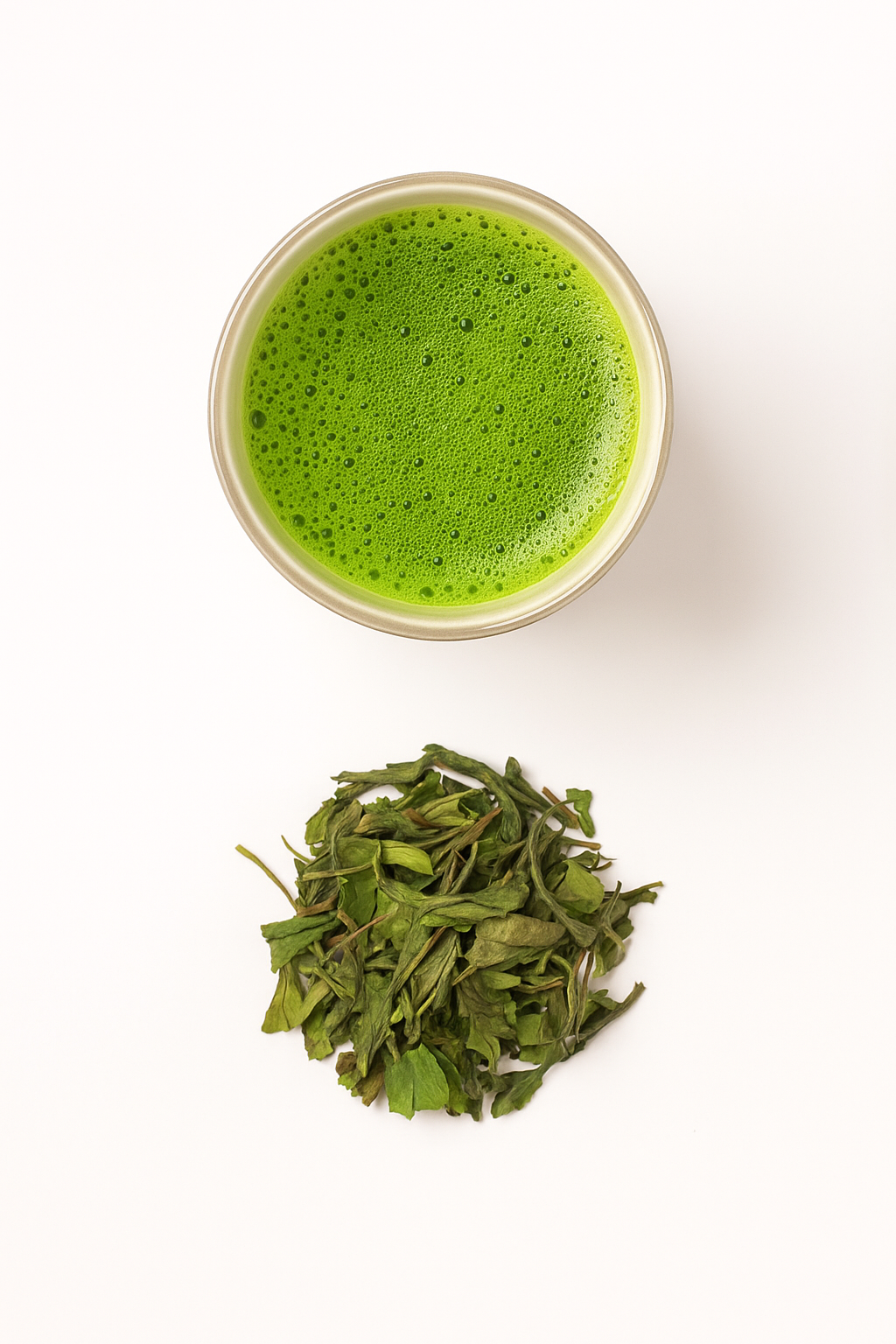
Matcha & Iron: What You Need to Know About Absorption and Balance
Matcha is widely praised for its antioxidant power, calming energy, and ability to support focus without the crash of coffee. But if you’ve ever wondered how it affects your iron levels, you’re not alone.
Let’s break down the facts about matcha and iron absorption and how to enjoy your daily ritual without compromising your body’s needs.
The Science: How Matcha Affects Iron
Like all green teas, matcha contains natural compounds called tannins and catechins. These antioxidants offer plenty of health benefits, but they can also interfere with the absorption of non-heme iron — the type of iron found in plant-based foods like leafy greens, beans, and legumes.
This doesn’t mean matcha depletes your iron levels. But drinking matcha right alongside an iron-rich meal can reduce how much of that iron your body absorbs in that moment.
Should You Be Concerned?
For most people with a balanced diet, this interaction is minimal and not a cause for concern. The body is incredibly efficient at regulating iron, especially if your diet includes both plant and animal sources.
However, if you:
-
Follow a vegan or vegetarian diet
-
Have a history of iron deficiency or anemia
-
Are pregnant or have increased iron needs
…you may want to be more intentional about when you drink matcha.
Are There Real Cases Linking Green Tea to Iron Deficiency?
A 2001 BMJ case report documented a young woman with persistent iron deficiency anemia despite supplementation. The cause? She was drinking over 1.5 liters (!) of green tea daily. Her condition only improved after eliminating green tea, confirming that its polyphenols were significantly blocking non-heme iron absorption. This case highlights how excessive green tea, especially in those with existing deficiencies, can directly impact iron status.
The Simple Fix: Timing
You don’t need to skip your matcha. Just give it some space from iron-rich meals or supplements.
Here’s how:
-
Enjoy matcha at least 1–2 hours before or after eating iron-rich foods.
-
If you're taking an iron supplement, don’t pair it with matcha.
-
Add vitamin C to your meals, it boosts iron absorption and can help counteract the minor effect of tannins.
Bonus Tip: What to Eat With Matcha
While iron-rich meals and matcha are best spaced apart, matcha pairs beautifully with:
-
Fresh fruits (especially berries, citrus, and melons)
-
Oats, nuts, and almond milk
-
Light breakfast or afternoon snacks that don’t rely on iron content
This keeps your matcha ritual intact, while giving your body the nutrients it needs, absorbed efficiently.
The Bottom Line
Matcha is a powerful addition to your wellness routine, rich in antioxidants and L-theanine. While it may slightly affect iron absorption in some cases, the solution is simple: timing and balance.
Sip your matcha with intention — and let both your ritual and your nutrition thrive.


